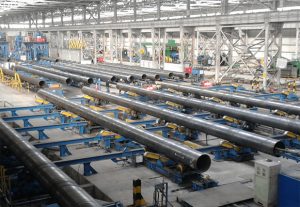Crude steel will show a destocking trend
The global steel industry is facing a significant shift as the market for crude steel is expected to witness a destocking trend in the coming months. Crude steel refers to the primary output of round steel pipe production, which serves as a key indicator of the overall health and performance of the steel sector. Understanding the factors driving this anticipated destocking trend is crucial for industry players and stakeholders to plan their strategies effectively.
One of the primary drivers of the destocking trend in crude steel is the current global economic landscape. The ongoing trade tensions and uncertainties surrounding international trade policies have led to a slowdown in many economies. As a result, steel-consuming sectors such as construction, automotive, and manufacturing have experienced a decrease in demand for steel products. This decline in demand has created excess inventory levels throughout the supply chain, prompting China steel tube manufacturers to reduce their production output and destock their inventories.

Another factor contributing to the destocking trend is the increasing focus on sustainability and environmental regulations. Governments and regulatory bodies are imposing stricter emissions standards and promoting sustainable practices in various industries, including steel production. As a result, steel manufacturers are adopting greener technologies and reducing their carbon footprint. However, this transition often requires temporary production adjustments and may lead to destocking efforts as companies realign their operations to meet regulatory requirements.
Additionally, the destocking trend can be attributed to the cyclical nature of the steel industry. The steel market experiences periodic fluctuations in supply and demand, and destocking phases are a natural part of the market cycle. During periods of low demand or economic downturns, steel producers aim to reduce their inventory levels of rectangular hollow section to manage costs and maintain profitability. Destocking allows them to align their production capacity with the current market conditions and avoid excessive stockpiles.
The destocking trend in crude steel has implications for various stakeholders. Steel producers may face challenges in adjusting their production levels to match the reduced demand, leading to potential plant shutdowns or layoffs. On the other hand, steel consumers can benefit from lower prices resulting from the destocking efforts as steel manufacturers reduce their inventories and offer discounts to attract buyers.
Industry analysts and investors closely monitor the destocking trend in crude steel as it can provide insights into the overall market conditions and future price movements. Destocking phases are often followed by restocking periods as demand recovers of black iron steel pipe, leading to increased production and potential price increases.
Tel: +86 18202256900 Email: steel@fwssteel.com










